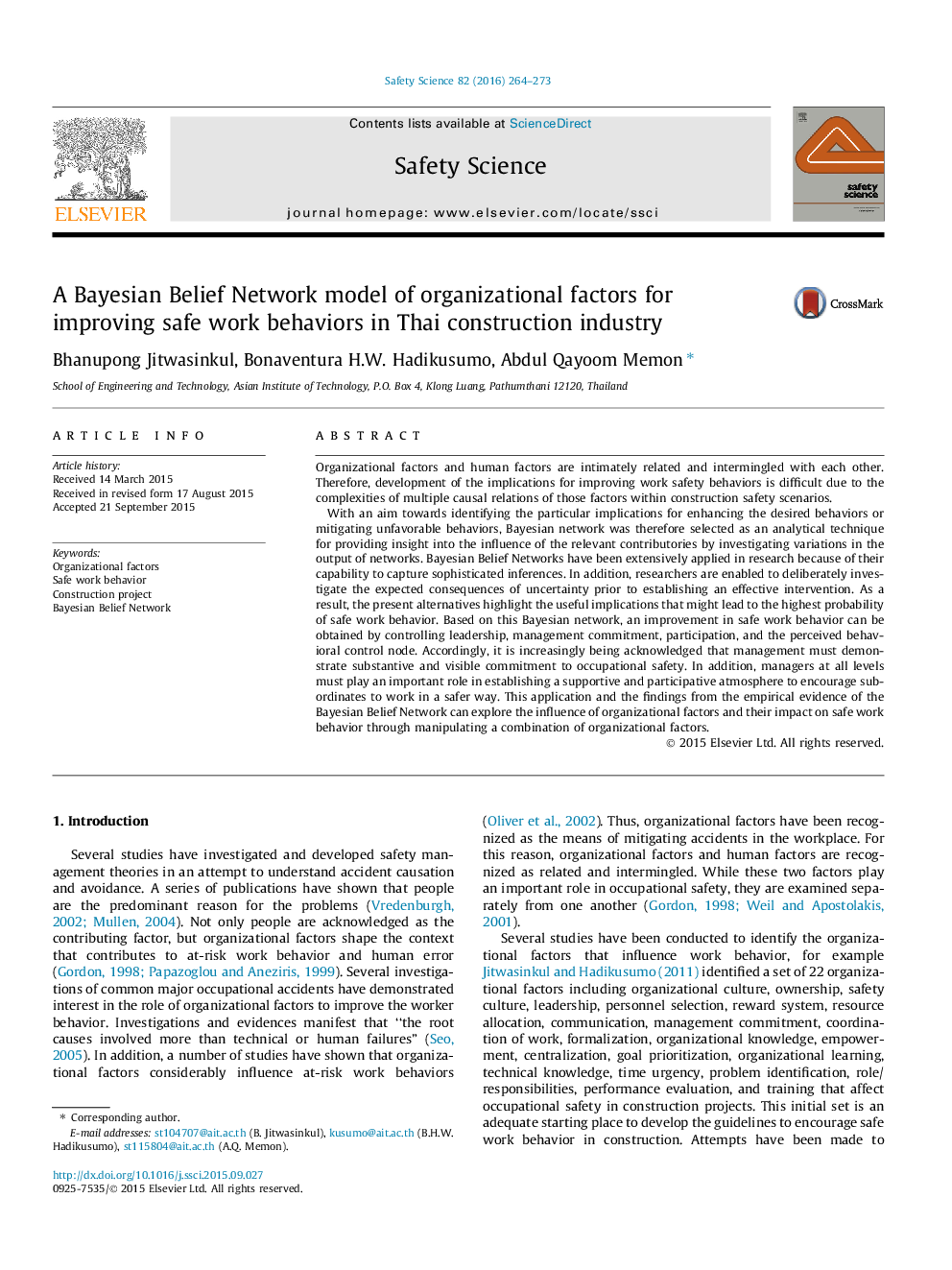| Article ID | Journal | Published Year | Pages | File Type |
|---|---|---|---|---|
| 6975597 | Safety Science | 2016 | 10 Pages |
Abstract
With an aim towards identifying the particular implications for enhancing the desired behaviors or mitigating unfavorable behaviors, Bayesian network was therefore selected as an analytical technique for providing insight into the influence of the relevant contributories by investigating variations in the output of networks. Bayesian Belief Networks have been extensively applied in research because of their capability to capture sophisticated inferences. In addition, researchers are enabled to deliberately investigate the expected consequences of uncertainty prior to establishing an effective intervention. As a result, the present alternatives highlight the useful implications that might lead to the highest probability of safe work behavior. Based on this Bayesian network, an improvement in safe work behavior can be obtained by controlling leadership, management commitment, participation, and the perceived behavioral control node. Accordingly, it is increasingly being acknowledged that management must demonstrate substantive and visible commitment to occupational safety. In addition, managers at all levels must play an important role in establishing a supportive and participative atmosphere to encourage subordinates to work in a safer way. This application and the findings from the empirical evidence of the Bayesian Belief Network can explore the influence of organizational factors and their impact on safe work behavior through manipulating a combination of organizational factors.
Related Topics
Physical Sciences and Engineering
Chemical Engineering
Chemical Health and Safety
Authors
Bhanupong Jitwasinkul, Bonaventura H.W. Hadikusumo, Abdul Qayoom Memon,
